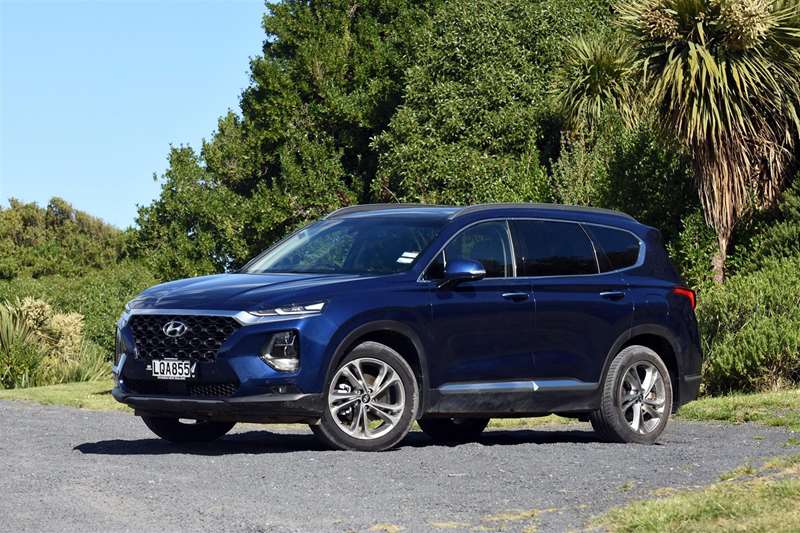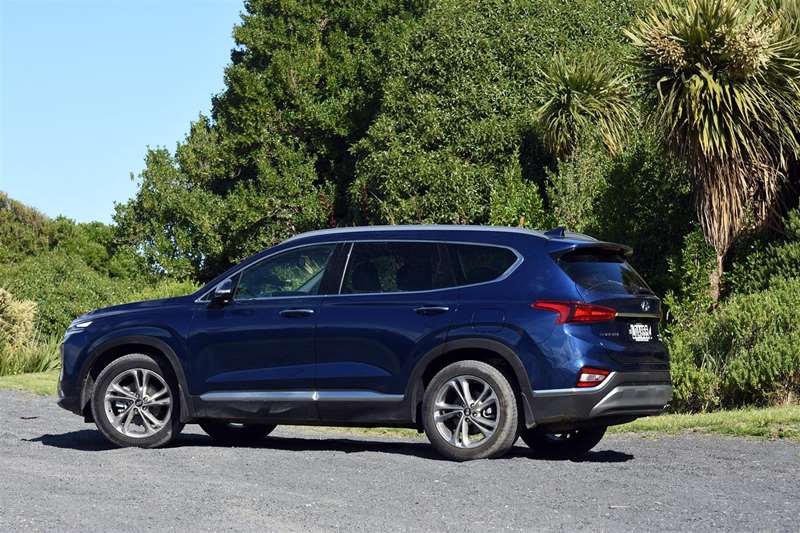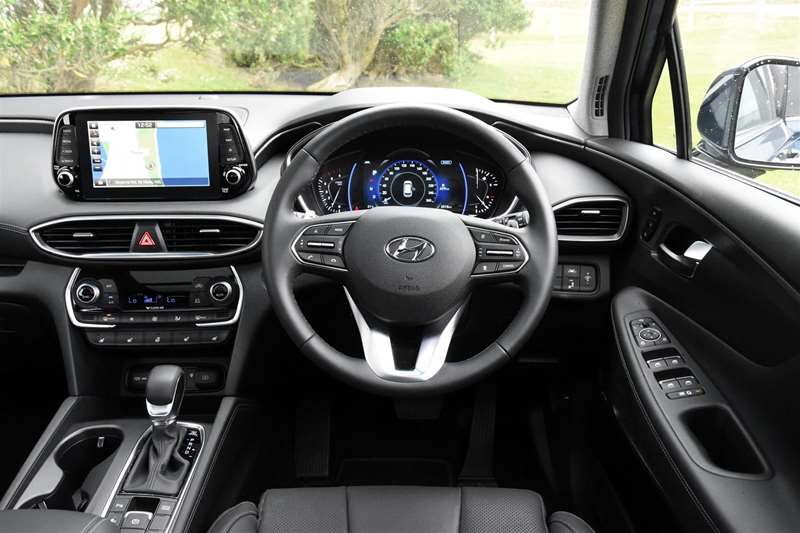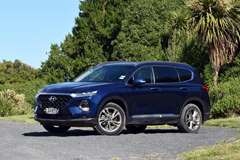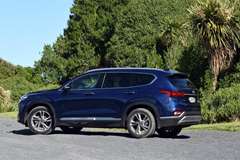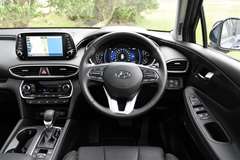The cleverly reimagined Santa Fe is Hyundai’s best large SUV to date, writes David Thomson.
Launched here a couple of months back, the latest Santa Fe is new from the ground up, with an increase in size and fresh looks.
There’s also been a change to models offered, with the five-seater, front-wheel-drive and V6 petrol versions no longer available. Instead, each of the models in the new range come with seven seats and all-wheel-drive as standard, and a carry-over four-cylinder engine — 2.4-litre petrol or 2.2-litre turbo diesel — under the bonnet.
Hyundai supplied the 2.2 Diesel Limited for appraisal. It is the flagship of the new Santa Fe range, and carries an $82,990 price tag.
Hyundai’s confidence as a powerhouse global brand is aptly captured by the new Santa Fe’s assertive styling. The prominent nose is the boldest version yet of the company’s cascading grille look and the angular sculpting of the vehicle’s panels even includes a subtle power bulge on the bonnet. The Limited’s appearance is enlivened by plenty of chrome and 19-inch wheels.
Using the Santa Fe to collect four out-of-town visitors, I was sufficiently emboldened by the size of the boot to ignore their advice that two vehicles would be needed. Sure enough, with the third row of seats stowed, a load comprising three hard-shell suitcases, two soft-shell travelling packs and four day bags was easily swallowed in a space with nominal 547 litre capacity.
When such capacity is not needed, the rear seats — best suited for kids — pull up from the floor to provide a total seating capacity for seven, but with boot space reduced to 130 litres. At the opposite extreme, activate the remote release system to drop the middle seats forward from the boot cavity as well as the rear pair, and cargo capacity rises to 1625 litres.
Those middle seats were needed on test. Accommodated on split-folding seats that adjust for back angle and legroom, three of my visitors said they were impressed by the space on offer, and especially head room.
Life is even better up front, where occupants are cossetted in command-style seats, power-adjusting, and ventilated as well as heated.
Trimmed in artificial leather, the cabin has a premium feel despite hard plastics low down, with thoughtful features such as rubberised surfaces for many of the numerous storage cubbies. A double sunroof and a light semi-woven finish to the upper trims ensure a pleasantly airy feel. On the minus side, the dash-mounted touchscreen is small for a car of this size, its graphics dated, and its satellite navigation not particularly intuitive to use.
As range flagship, the Santa Fe Limited is well equipped: there’s a separate air-conditioning unit for the third row of seats as well as dual-zone climate up front; a premium sound system, and head-up display also feature; ample wired and wireless device connectively is provided, including via Apple CarPlay and Android Auto as well as Hyundai’s’s new AutoLink connected services system; a wireless charge pad for mobile devices is also fitted while keyless entry and a power-operated tailgate are standard convenience features for the flagship Santa Fe.
Safety features include autonomous emergency braking, radar cruise control (with stop and go), blind-spot collision avoidance, rear cross-traffic alert, driver-attention warning, lane-keep assist, front and rear parking sensors and a 360-degree-view camera.
Two innovative safety systems with a family-friendly focus are worthy of special mention. One is an electric locking system for the rear doors that activates to prevent a door from being opened into the path of a vehicle. The other is Rear Occupant Alert, which provides various warnings to prevent the driver accidentally leaving the car with an occupant in one of the rear seats.
Although bigger than the previous Santa Fe, the new model is lighter. That, along with a new eight-speed automatic gearbox (the old Santa Fe was a six-speed), enable the carry-over 147kW/440Nm turbo-diesel to provide mechanically smooth and respectably peppy motoring. Economy is rated at 7.5l/100km for the standard cycle, though Drivesouth only managed 8.6/100km on a test that included plenty of town driving.
The new Santa Fe is especially well cut out for the highway haul, with wind roar particularly well contained, and road noise acceptable even over coarse-chip surfaces.
When venturing off the tarmac, the Santa Fe’s HTRAC drive system can provide a 50:50 front-rear power split, and there’s a lock mode to enhance off-road work. Even so, and despite the provisioning of a full-sized spare wheel, the new Santa Fe’s Limited’s 185mm of ground clearance and road-focused road tyres signal a need for caution away from normal routes.
Travel down an unmetalled all-weather road was attempted on test, but a combination of heavy recent rain, the Santa Fe’s tarmac-focused tyres and knowledge of what lay ahead forced abandonment after a couple of hundred metres of slipping and sliding. Substituting this for a side-trip down a more conventional gravel road, the Santa Fe displayed a comfortable and surefooted demeanour.
The vehicle should certainly be up to a little gentle adventuring when conditions are reasonably dry, has the towing capacity (2000kg) to handle boat ramp duties with ease and will be well-suited to the winter skifield run. — exactly what is required of a large lifestyle SUV in the modern era.
Photos: David Thomson
